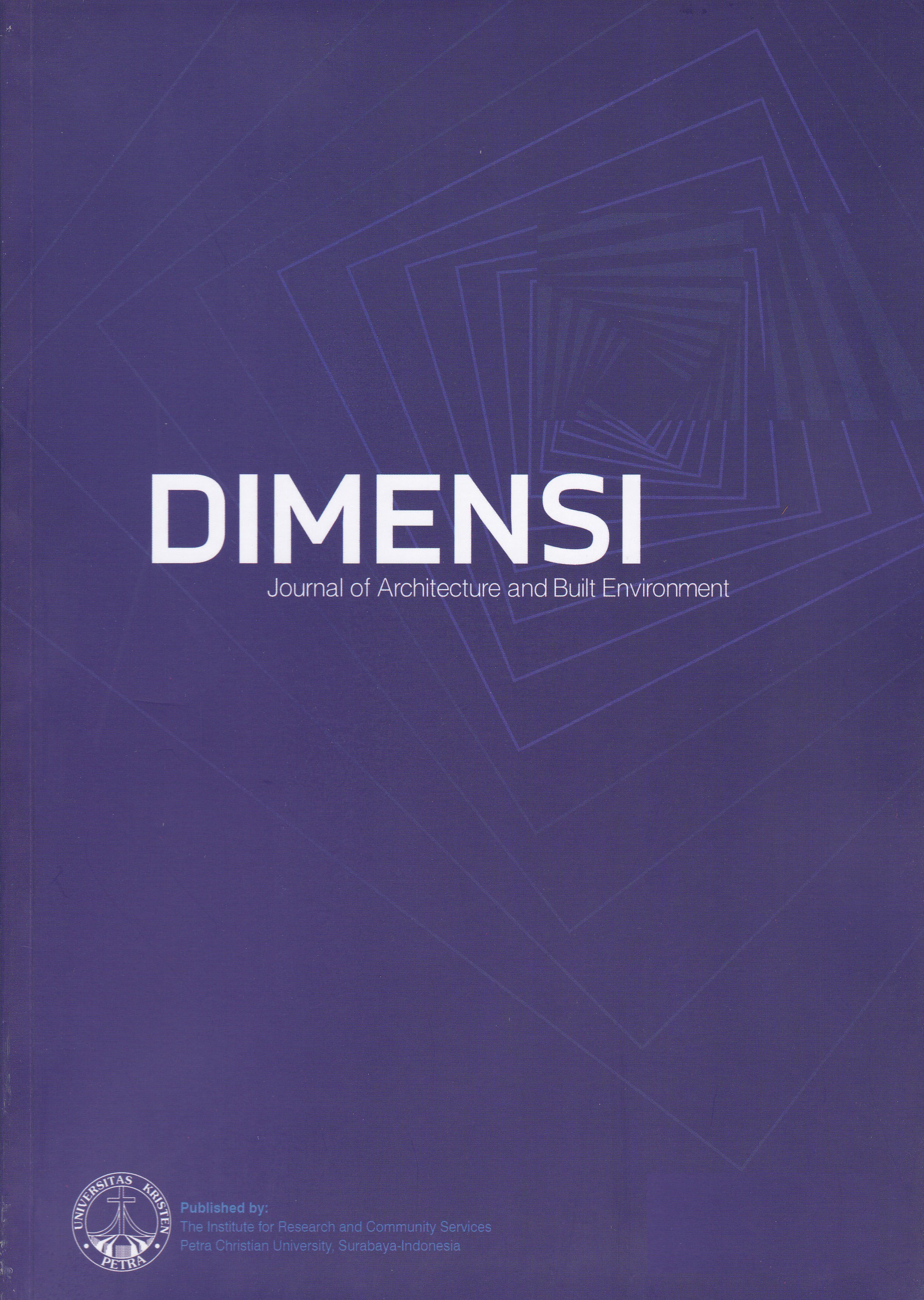THE THIRD SPACE AND THE ROLE OF BUNDO KANDUANG IN RUMAH GADANG
DOI:
https://doi.org/10.9744/dimensi.48.2.141-148Keywords:
Bundo Kanduang, Minangkabau, matrilineal, rumah gadang, the third spaceAbstract
Minangkabau is a tribe in West Sumatra with a matrilineal kinship system, which draws lineage based on the mother's ethnicity. Therefore, women are the main characters in the tribe. Minangkabau women who are married, wise, and elder are called Bundo Kanduang, who have duties and obligations to carry out. Given the importance of the role of Bundo Kanduang, it is necessary to know how the role of Bundo Kanduang can be carried out in the Rumah Gadang, both physically/real and non-physical/imaginary. The research method used is an ethnographic method with a qualitative analysis approach using the theory of the third space from Edward Soja. Based on the analysis, it was found that the activities of Bundo Kanduang in carrying out its role have been facilitated in the Rumah Gadang, both physically and non-physically, even beyond what is known as third space.
Downloads
References
Bustami. (1988). Kedudukan dan Peranan Wanita Dalam Kebudayaan Bangsa Minangkabau. Departemen Pendidikan dan Kebudayaan, 1-4.
Ernatip., D. S. (2014). Kedudukan dan Peran Bundo Kanduang Dalam Sistem Kekerabatan Matri-lineal di Minangkabau, Balai Pelestarian Nilai Budaya Padang, Padang, 80-97.
Hardono, S., Bahauddin, A., Abdullah, A., & Maliki, N.Z. (2014). The Matrilineal Architectural Values on the Construction of the Minangkabau House, DIMENSI-Journal of Architecture and Built Environment, 41(1), 51-58.
Le Comte, M. D., & Goetz, J. P. (1982). Problems of Reliability and Validity in Ethnographic Research, Review of Educational Research, 51.
Marthala, A. E. (2013). Rumah gadang, Kajian Filosofi Arsitek Minangkabau.Humaniora. Bandung.
Penghulu, Idrus Hakimy DT. Rajo. (1994). Pegangan Penghulu, Bundo Kanduang, dan Pidato Alua Pasambahan Adat di Minangkabau. Remaja Rosdakarya Offset, Bandung, 94-105.
Penghulu, Idrus Hakimy DT. Rajo. (1978). Buku Pegangan Bundo Kanduang di Minangkabau. CV Rosda, Bandung, 21-31.
Rapoport, A. (1974). House Form and Culture, Pren-tice Hall, Inc., New Jersey.
Rapoport, A. (1980). Human Aspects of Urban Form, Pergamon Press, Oxford.
Soja, E. (1996). Third Space, Journey to Lost Angeles and Other Real and Imagined Places, Blackwell Publishers, U.K, 8-11, 60-82.
Triatmodjo, S. (2010). Permufakatan dan Desakralisasi Ruang di Permukiman Kauman Yogya-karta, Disertasi, Jurusan Teknik Arsitektur, Fakultas Teknik, Universitas Gadjah Mada.
Triatmodjo, S. (2015). Membangun Lokalitas Ruang Kota (Building Up Locality in Urban Space). Ars (Jurnal Seni rupa & Desain), 18(1), 1-8.
Wardani, L. K. (2010). Fungsi, Makna dan Simbol (Sebuah Kajian Teoritik). In: Seminar Nasional Jelajah Arsitektur Nusantara 101010, Institut Teknologi Surabaya.
Downloads
Published
How to Cite
Issue
Section
License
Authors who publish with this journal agree to the following terms:
- Authors retain copyright and grant the journal right of first publication with the work simultaneously licensed under a Creative Commons Attribution License that allows others to share the work with an acknowledgement of the work's authorship and initial publication in this journal.
- Authors are able to enter into separate, additional contractual arrangements for the non-exclusive distribution of the journal's published version of the work (e.g., post it to an institutional repository or publish it in a book), with an acknowledgement of its initial publication in this journal.
- Authors are permitted and encouraged to post their work online (e.g., in institutional repositories or on their website) prior to and during the submission process, as it can lead to productive exchanges, as well as earlier and greater citation of published work (See The Effect of Open Access).



















